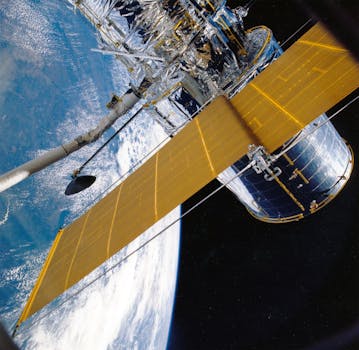
GEO Satellites: Understanding the Technology and Applications
GEO satellites, or Geostationary Earth Orbit satellites, are a type of satellite that orbits the Earth at an altitude of approximately 36,000 kilometers. At this altitude, the satellite’s orbital period matches the Earth’s rotational period, allowing it to remain stationary relative to a fixed point on the Earth’s surface. GEO satellites have become a crucial part of modern telecommunications, providing global coverage and enabling a wide range of applications.
The technology behind GEO satellites is complex and involves a range of components, including the satellite itself, the launch vehicle, and the ground control system. The satellite is equipped with a range of instruments, including transponders, antennas, and solar panels, which enable it to receive and transmit signals. The launch vehicle is used to launch the satellite into orbit, and the ground control system is used to monitor and control the satellite’s operations.
Applications of GEO Satellites
GEO satellites have a wide range of applications, including telecommunications, navigation, meteorology, and Earth observation. In the field of telecommunications, GEO satellites are used to provide broadband internet access, broadcast television channels, and enable mobile phone networks. They are also used for navigation, providing location information and timing signals for GPS and other satellite navigation systems.
In the field of meteorology, GEO satellites are used to monitor weather patterns and provide early warnings of severe weather events. They are also used for Earth observation, providing high-resolution images of the Earth’s surface and enabling scientists to study the environment and track changes in the climate.
Advantages and Challenges of GEO Satellites
GEO satellites have a number of advantages, including global coverage, high bandwidth, and reliability. They are also relatively low maintenance, as they can be controlled and monitored remotely. However, they also have some challenges, including high launch costs, limited maneuverability, and the risk of satellite failures.
Despite these challenges, GEO satellites continue to play a vital role in modern telecommunications and will likely remain an essential part of the global telecommunications infrastructure for the foreseeable future. As technology continues to evolve, we can expect to see new and innovative applications of GEO satellites, enabling even more efficient and effective communication and navigation systems.
Conclusion
In conclusion, GEO satellites are a crucial part of modern telecommunications, providing global coverage and enabling a wide range of applications. While they have some challenges, including high launch costs and limited maneuverability, they also have a number of advantages, including global coverage, high bandwidth, and reliability. As technology continues to evolve, we can expect to see new and innovative applications of GEO satellites, enabling even more efficient and effective communication and navigation systems.




